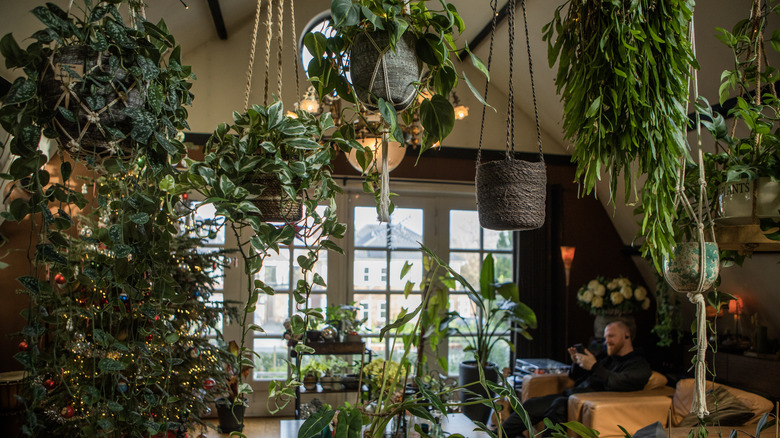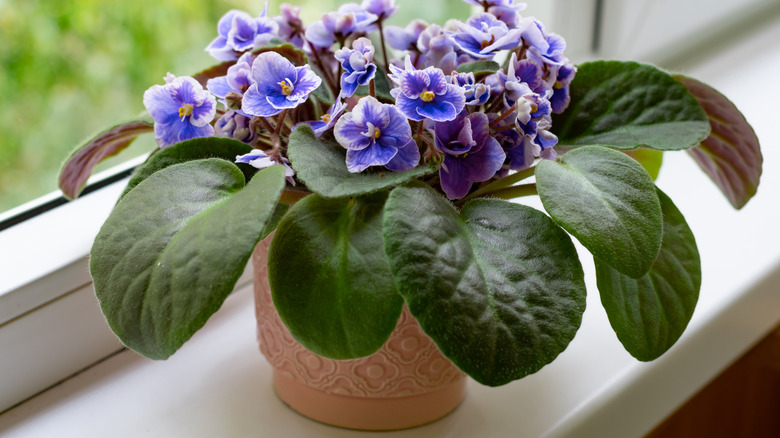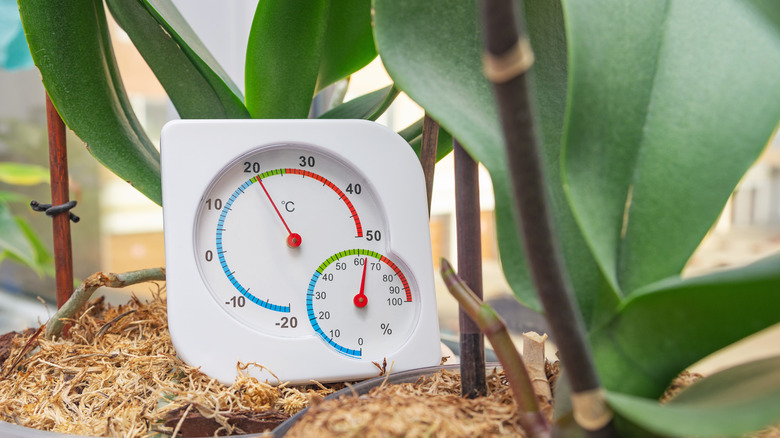The Most Ideal Room Temperature Setting For Flourishing Houseplants
As we all try to find the perfect temperature for our homes, balancing our comfort with our heating or cooling costs, it's also important to consider our houseplants' comfort. While most traditional houseplants can survive in temperatures in the range of 58 to 86 degrees Fahrenheit, they may not grow their best at the higher and lower ends of that range. Most plants also prefer cooler temperatures at night and slightly warmer temperatures during the day. So, the ideal temperature range for most houseplants is between 70 and 80 degrees during the day and 65 and 70 at night.
Houseplant lovers whose growing areas are consistently cooler than those ranges may want to consider growing plants like jasmine, ivy, and miniature roses, which can all make fantastic houseplants and thrive with daytime temperatures between 50 and 60 Fahrenheit, and nighttime temperatures as low as 45 degrees. Succulents and cacti also do well with those lower temperatures during the winter. Bulbs like tulips are other great options for colder spaces. A healthy houseplant collection in chillier spaces is possible if you pick the right plants.
Many popular houseplants need tropical or subtropical growing conditions
Many of the most popular houseplants are from tropical or subtropical regions and need temperatures that don't drop below 55 degrees Fahrenheit, even at night. Plants that thrive when the nighttime temperatures are above 55 degrees and daytime temperatures are between 60 and 65 degrees Fahrenheit include Christmas cacti, pileas, and peperomias. These temperature range requirements make these ideal houseplants for colder climates.
Some classic houseplants like African violets, philodendrons, and prayer plants benefit from even warmer temperatures and grow best when daytime temperatures are between 70 and 80 degrees, and nightly temperatures don't drop below 65 degrees Fahrenheit. These warmer temperatures can be potentially challenging to maintain during the winter, but you may be able to find a warm space in your house where these plants can grow to their full potential. Many of these plants can still survive at slightly lower temperatures but may not grow as well.
Protect your plants by avoiding sudden temperature fluctuations
When looking for ideal locations for your houseplants, don't just think about the area's average temperature. Consider if a spot will subject your plant to sudden temperature changes. Check your windows and doors for drafts that could harm your plants, and avoid placing your houseplants in drafty areas. Windows can offer wonderful light, but if they are not energy efficient, then temperatures around them may fluctuate rapidly due to changes in outdoor temperatures and sunlight. Similarly, putting your plant near a radiator or other heater could seem like a great way to keep a plant warm, but the rapid temperature changes as the device turns off and on could actually harm your houseplant.
Investing in a digital thermometer is an easy way to check the temperatures your plants are exposed to. Consider the temperature of the water you give your plants as well. It should be similar to the room's temperature, as excessively hot or cold water can be just as damaging as extreme air temperatures.


